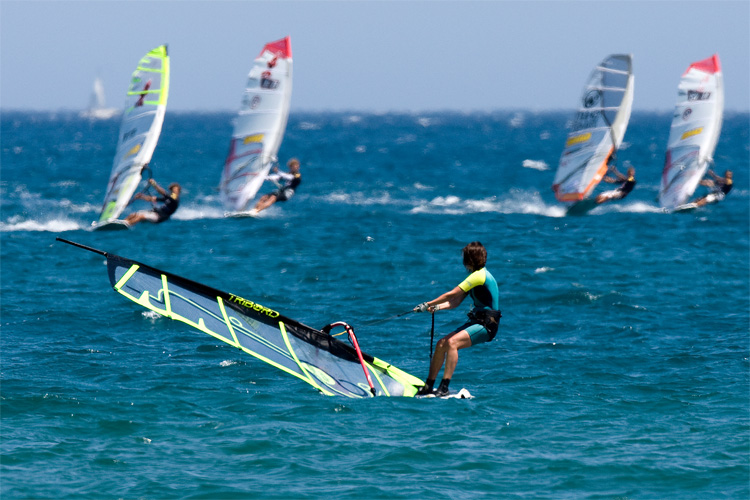Uphauling is part of the windsurfing game. The more you sail, the more you'll need to fine-tune your uphaul proficiency.
One of the most common mistakes is to think that uphauling is the result of a miscalculation made while tacking or jibing.
Yes, errors can happen. But there are many other reasons to uphaul.
For example, if the wind is not strong enough to lift your sail while doing a waterstart, you need to uphaul to get things going.
Problems can also occur in high wind conditions or when wind gusts are very much unpredictable.
And then, in planing situations, if the rig is lying downwind, it's often far quicker and much less effort to uphaul rather than go through a time of consuming waterstart.
One of the best tricks is to keep your back straight and vertical and your knees bent while uphauling.
If you do it slowly and using your weight, you'll notice the water draining from the sail until you reach a safe/neutral position.
You can uphaul downwind or upwind.
If the rig is downwind of the board, the top of the mast will point downwind, and you will feel the wind on your back as you face the sail.
This is the easiest way to uphaul the sail.
Uphauling 101
Now learn how to uphaul downwind with the minimum effort:
- Put the front foot instep against the front of the mast foot and the back foot shoulder-width on the centerline;
- Grab the uphaul rope;
- Bend your knees;
- Adjust your hand on the uphaul so your arms and back are straight;
- Keep your arms and back straight;
- Push up using your thigh muscles;
- When the top of the mast is leveled with your head, begin moving hand-over-hand up the uphaul rope;
- Place both hands on the mast below the boom;
- Let the sail flag downwind with the board sideways to the wind;
- You're in a safe/neutral position and ready to resume sailing;
Uphauling in upwind mode is harder but not impossible:
- Start uphauling as you would if the rig was lying down until the top of the mast is leveled with your head;
- The sail will be pushed towards the front or back of the board;
- Don't move your feet;
- Keep the mast fixed in front of you with the back end of the sail and boom still in the water;
- The wind will blow on the sail;
- The board will spin around until the sail is flagging downwind;
- Straighten your body;
- Move hand-over-hand up the uphaul rope;
- Place both hands on the mast below the boom;
- You're in a safe/neutral position and ready to resume sailing;
The ideal uphaul situation is when the board is 90 degrees to the wind, and the sail is downwind of it.
Remember that all fundamental windsurfing maneuvers start from the safe/neutral position, also known as the basic position.
In this sailing mode, your board is always sideways to the wind.
Learn more windsurfing techniques in "Start Windsurfing Right!" and "RYA Advanced Windsurfing."
